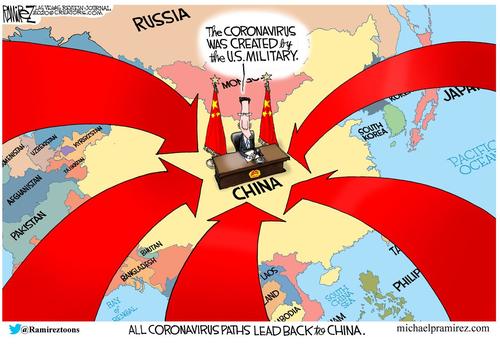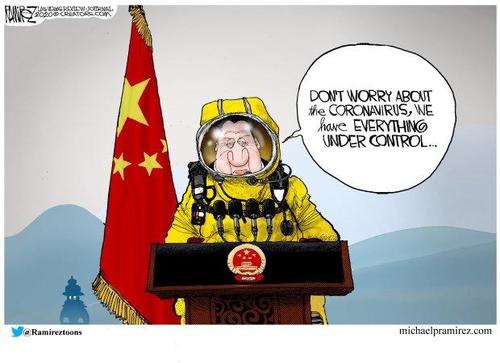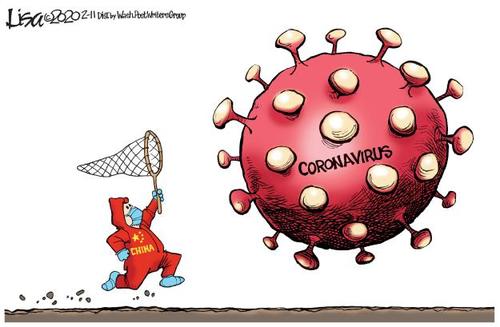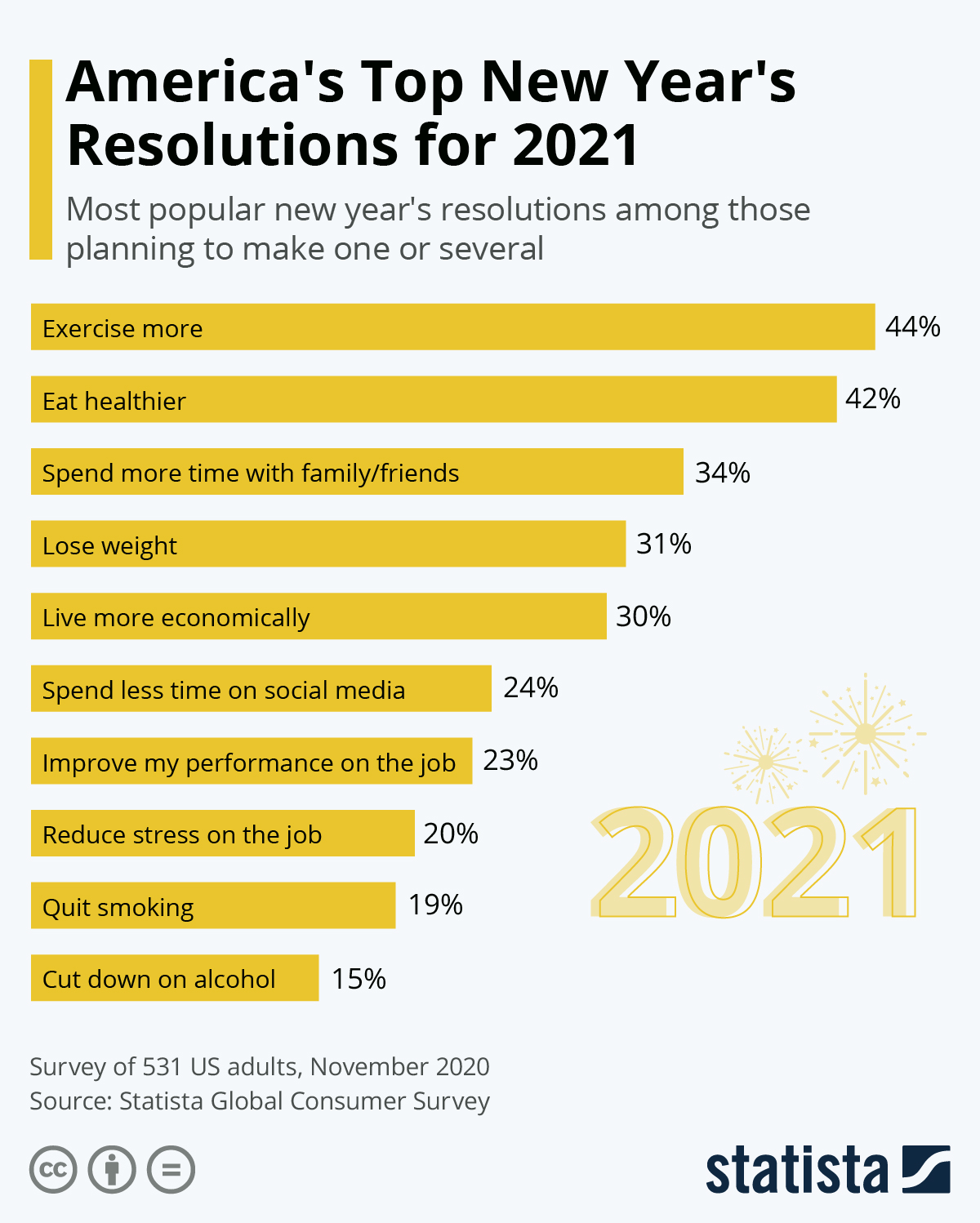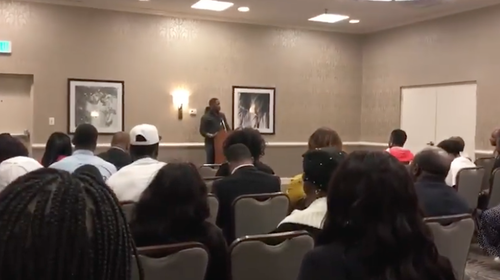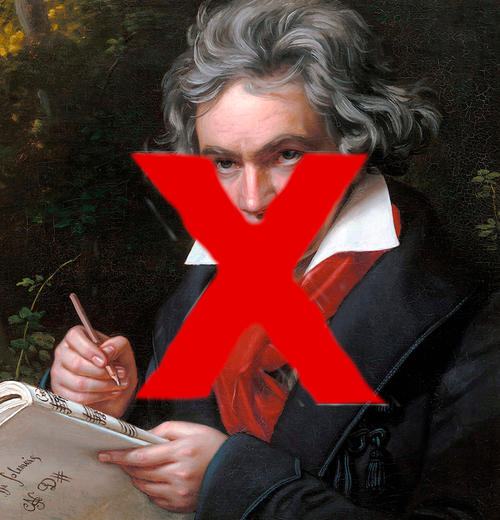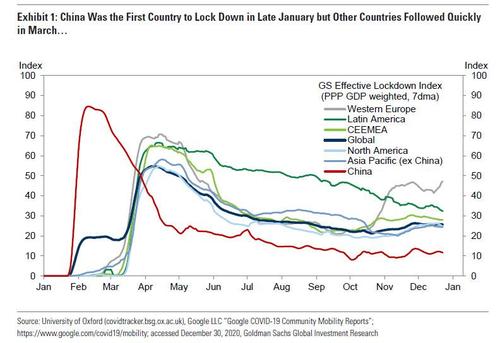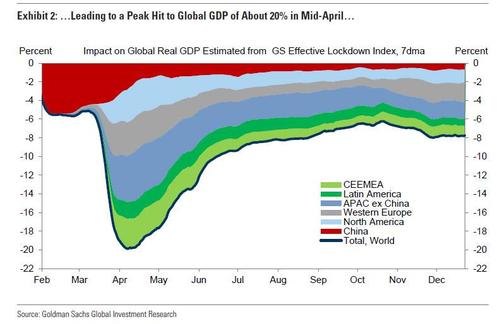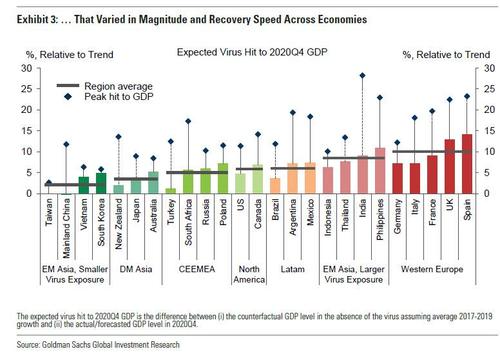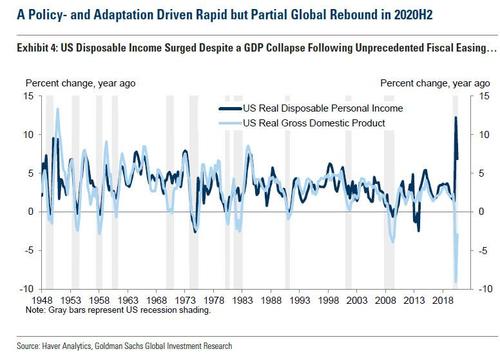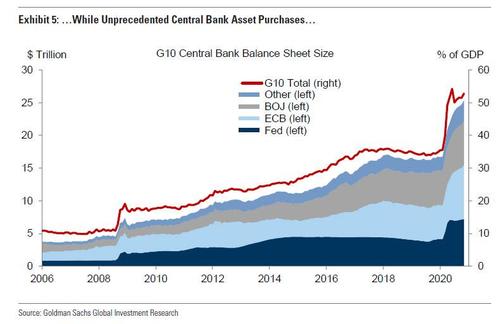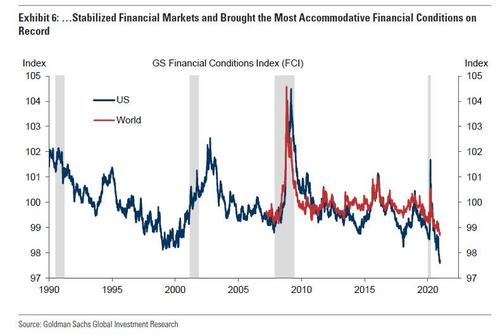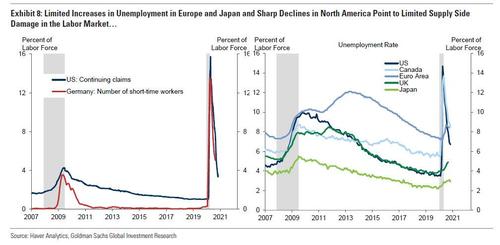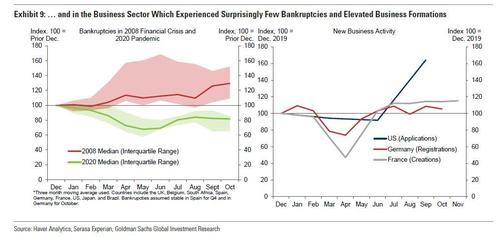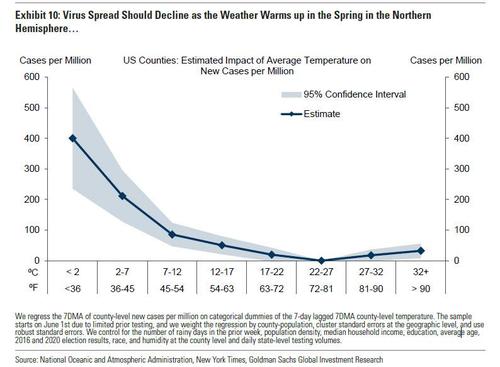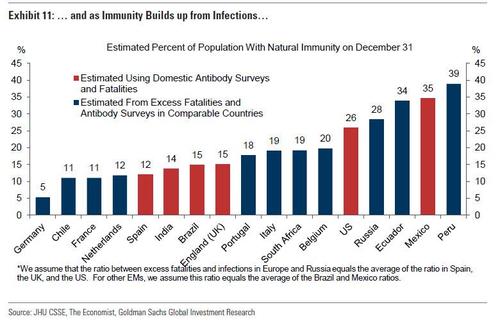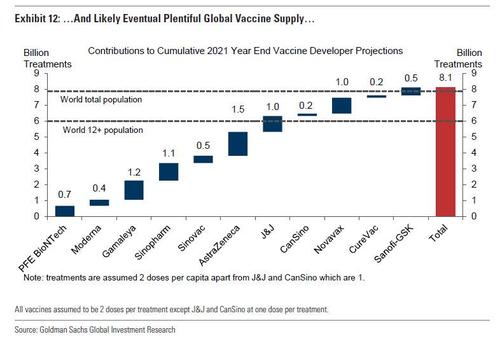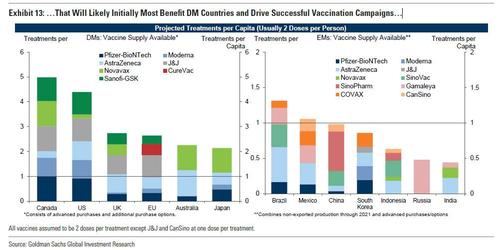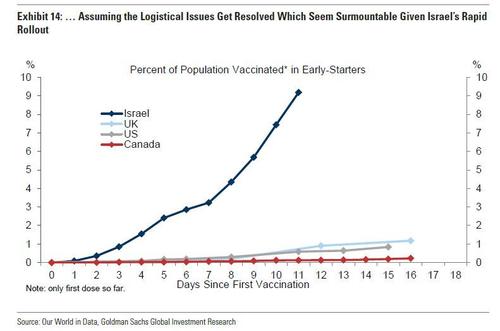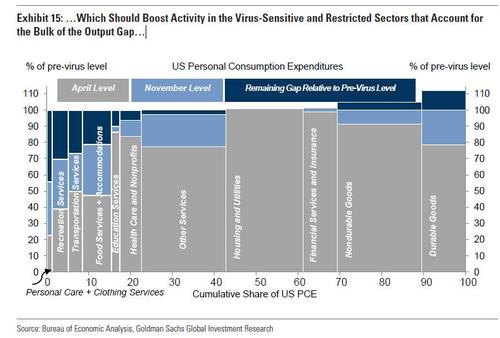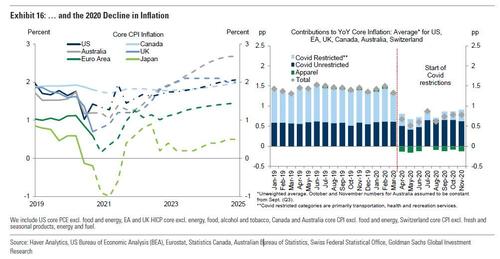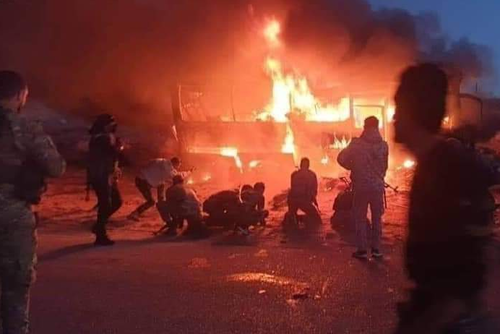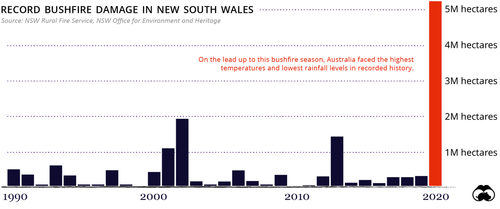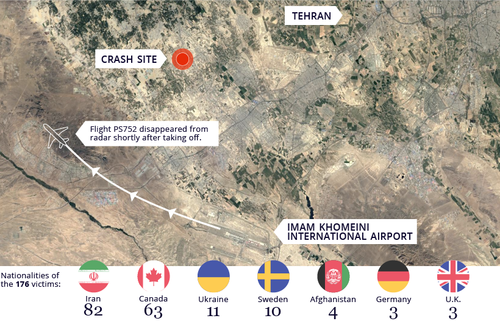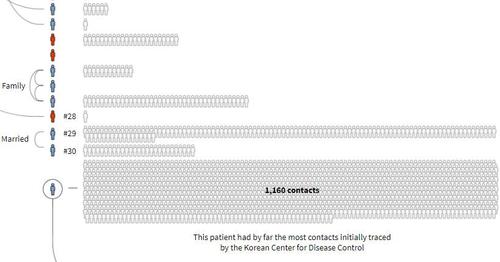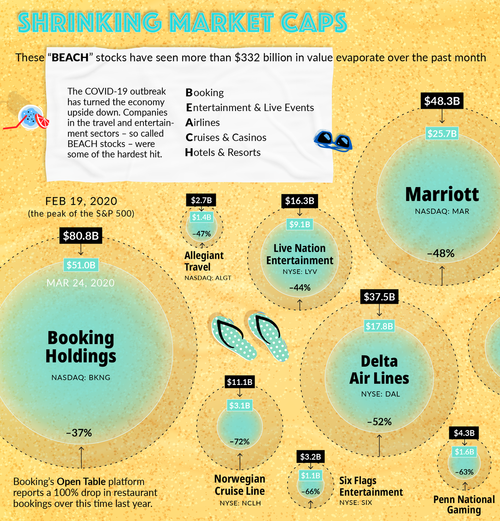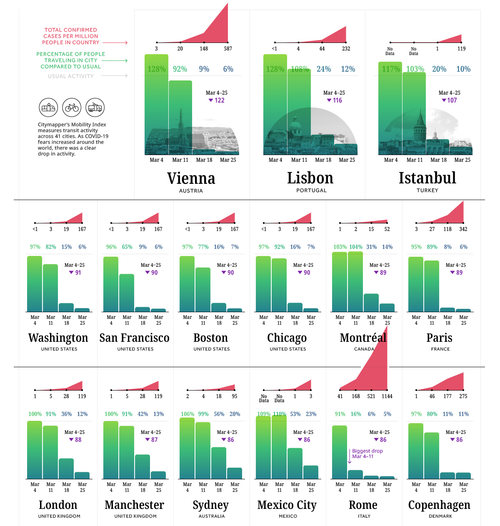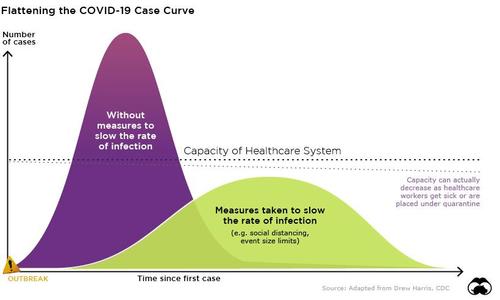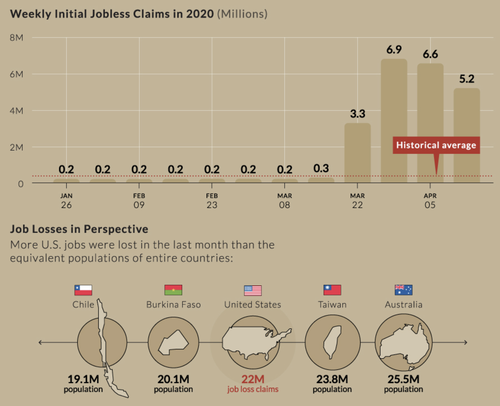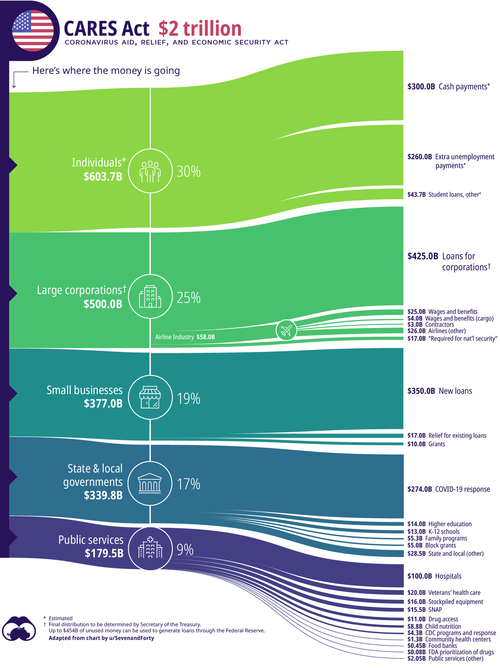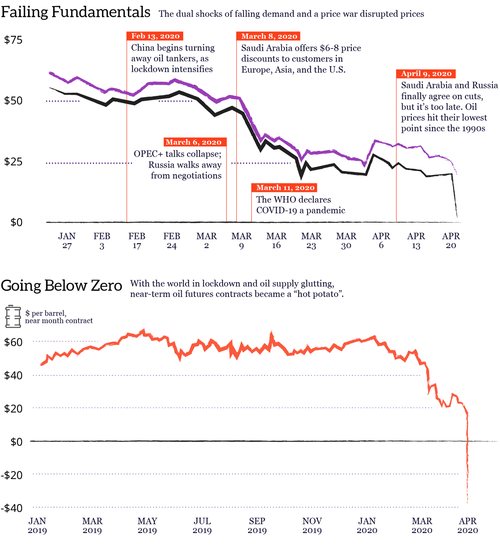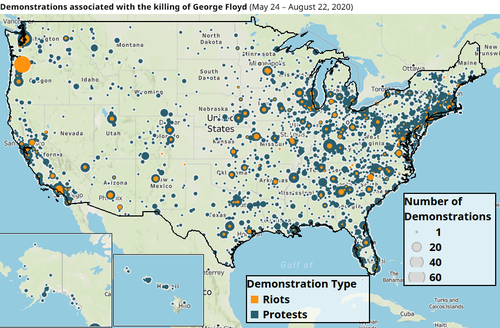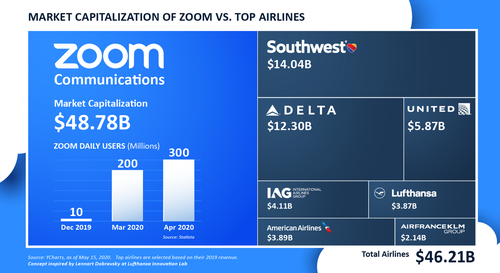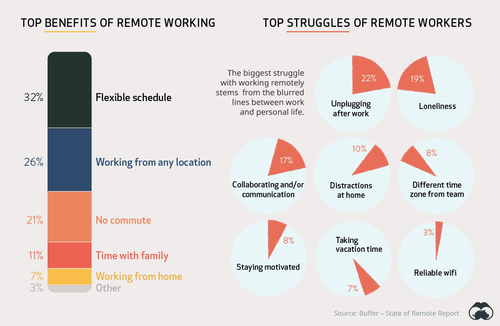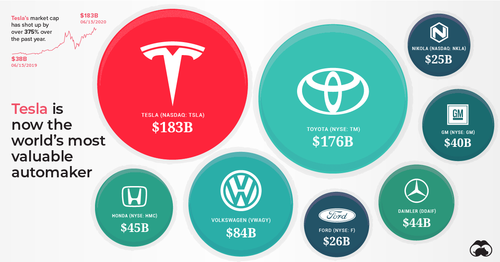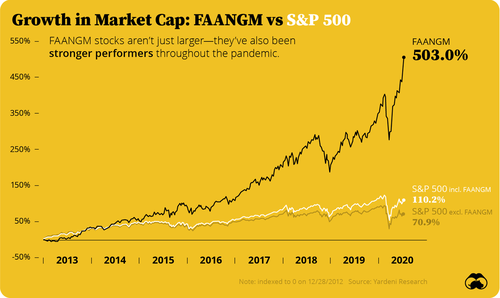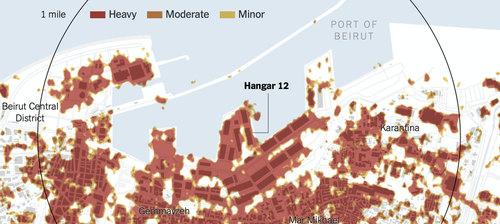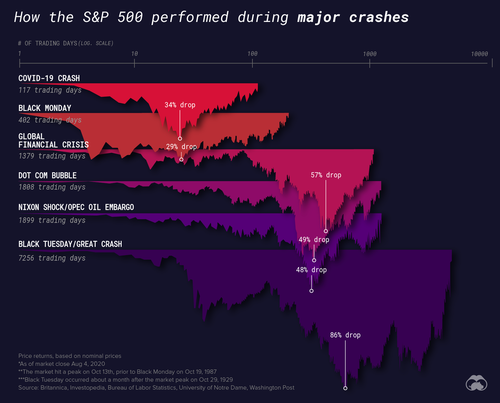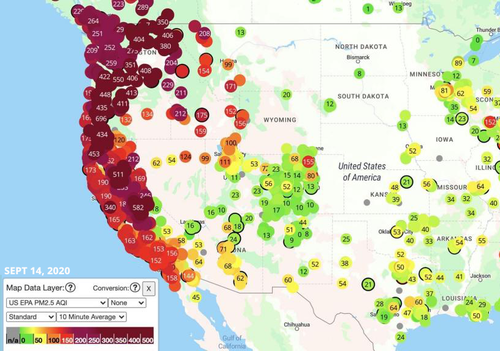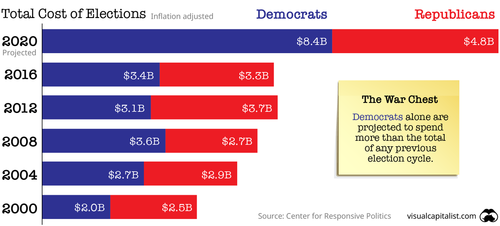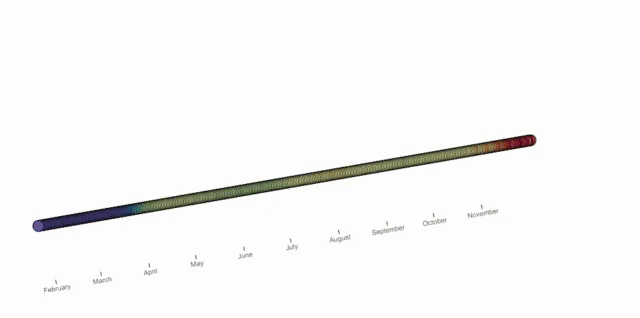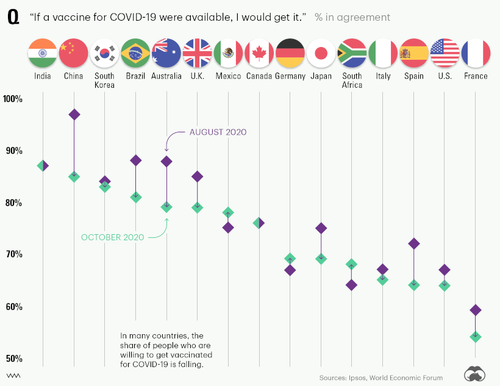Via South Front,
2020 was a year full of surprises. It marked the advent of a new reality which may, with an equal probability, lead humanity to a new dark age or to a global digital dystopia. In this context, there is little room for a positive scenario of sustainable development that would benefit people in general, as opposed to just a group of select individuals and special interest groups. The heft of shifts in 2020 is comparable to what European citizens felt on the eve of another change of the socio-economic formation in the early 17th and 20th centuries.
The past year began with the assassination of the Iranian military genius General Qasem Soleimani by the United States, and it ended with the murder of the prominent scholar Mohsen Fakhrizadeh by the Israelis. In early January, Iran, expecting another aggressive action from the West, accidently shot down a Ukrainian civil aircraft that had inexplicably altered its course over Tehran without request nor authorization. Around the same time, Turkey confirmed the deployment of its military in Libya, beginning a new phase of confrontation in the region, and Egypt responding with airstrikes and additional shows of force. The situation in Yemen developed rapidly: taking advantage of the Sunni coalition’s moral weakness, Ansar Allah achieved significant progress in forcing the Saudis out of the country in many regions. The state of warfare in northwestern Syria has significantly changed, transforming into the formal delineation of zones of influence of Turkey and the Russian-Iranian-Syrian coalition. This happened amid, and largely due to the weakening of U.S. influence in the region. Ankara is steadily increasing its military presence in the areas under its responsibility and along the contact line. It has taken measures to deter groups linked to Al-Qaeda and other radicals. As a result, the situation in the region is stabilizing, which has allowed Turkey to increasingly exert control over most of Greater Idlib.
ISIS cells remain active in the eastern and southern Syrian regions. Particular processes are taking place in Quneitra and Daraa provinces, where Russian peace initiatives were inconclusive by virtue of the direct destructive influence of Israel in these areas of Syria. In turn, the assassination of Qasem Soleimaniin resulted in a sharp increase in the targeting of American personnel, military and civil infrastructure in Iraq. The U.S. Army was forced to regroup its forces, effectively abandoning a number of its military installations and concentrating available forces at key bases. At the same time, Washington flatly rejected demands from Baghdad for a complete withdrawal of U.S. troops and promised to respond with full-fledged sanctions if Iraq continued to raise this issue. Afghanistan remains stable in its instability. Disturbing news comes from Latin America. Confrontation between China and India flared this year, resulting in sporadic border clashes. This situation seems far from over, as both countries have reinforced their military posture along the disputed border. The aggressive actions of the Trump administration against China deepen global crises, which has become obvious not only to specialists but also to the general public. The relationship between the collective West and the Russian Federation was re-enshrined in “the Cold War state”, which seems to have been resurrected once again.
The turbulence of the first quarter of 2020 was overshadowed by a new socio-political process – the corona-crisis, the framework of which integrates various phenomena from the Sars-Cov2 epidemic itself and the subsequent exacerbation of the global economic crisis. The disclosure of substantial social differences that have accumulated in modern capitalist society, lead to a series of incessant protests across the globe. The year 2020 was accompanied by fierce clashes between protesters professing various causes and law enforcement forces in numerous countries. Although on the surface these societal clashes with the state appear disassociated, many share related root causes. A growing, immense wealth inequality, corruption of government at all levels, a lack of any meaningful input into political decision making, and the unmasking of massive censorship via big tech corporations and the main stream media all played a part in igniting societal unrest.
In late 2019 and early 2020 there was little reason for optimistic projections for the near future. However, hardly anyone could anticipate the number of crisis events and developments that had taken place during this year. These phenomena affected every region of the world to some extent.
Nevertheless, Middle East has remained the main source of instability, due to being an arena where global and regional power interests intertwine and clash. The most important line of confrontation is between US and Israel-led forces on the one hand, and Iran and its so called Axis of Resistance. The opposing sides have been locked in an endless spiral of mutual accusations, sanctions, military incidents, and proxy wars, and recently even crossed the threshold into a limited exchange of strikes due to the worsening state of regional confrontation. Russia and Turkey, the latter of which has been distancing itself from Washington due to growing disagreements with “NATO partners” and changes in global trends, also play an important role in the region without directly entering into the confrontation between pro-Israel forces and Iran.
As in the recent years, Syria and Iraq remain the greatest hot-spots. The destruction of ISIS as a terrorist state and the apparent killing of its leader Abu Bakr al-Baghdadi did not end its existence as a terror group. Many ISIS cells and supporting elements actively use regional instability as a chance to preserve the Khalifate’s legacy. They remain active mainly along the Syria-Iraq border, and along the eastern bank of the Euphrates in Syria. Camps for the temporary displaced and for the families and relatives of ISIS militants on the territory controlled by the Syrian Democratic Forces (SDF) in north-eastern Syria are also breeding grounds for terrorist ideology. Remarkably, these regions are also where there is direct presence of US forces, or, as in the case of SDF camps, presence of forces supported by the US.
The fertile soil for radicalism also consists of the inability to reach a comprehensive diplomatic solution that would end the Syrian conflict in a way acceptable to all parties. Washington is not interesting in stabilizing Syria because even should Assad leave, it would strengthen the Damascus government that would naturally be allied to Russia and Iran. Opposing Iran and supporting Israel became the cornerstone of US policy during the Trump administration. Consequently, Washington is supporting separatist sentiments of the Kurdish SDF leadership and even allowed it to participate in the plunder of Syrian oil wells in US coalition zone of control in which US firms linked to the Pentagon and US intelligence services are participating. US intelligence also aids Israel in its information and psychological warfare operations, as well as military strikes aimed at undermining Syria and Iranian forces located in the country. In spite of propaganda victories, in practice Israeli efforts had limited success in 2020 as Iran continued to strengthen its positions and military capabilities on its ally’s territory. Iran’s success in establishing and supporting a land corridor linking Lebanon, Syria, Iraq, and Iraq, plays an important role. Constant expansion of Iran’s military presence and infrastructure near the town of al-Bukamal, on the border of Iraq and Syria, demonstrates the importance of the project to Tehran. Tel-Aviv claims that Iran is using that corridor to equip pro-Iranian forces in southern Syria and Lebanon with modern weapons.
The Palestinian question is also an important one for Israel’s leadership and its lobby in Washington. The highly touted “deal of the century” turned out to be no more than an offer for the Palestinians to abandon their struggle for statehood. As expected, this initiative did not lead to a breakthrough in Israeli-Palestinian relations. Rather the opposite, it gave an additional stimulus to Palestinian resistance to the demands that were being imposed. At the same time, Trump administration scored a diplomatic success by forcing the UAE and Bahrain to normalize their relations with Israel, and Saudi Arabia to make its collaboration with Israel public. That was a historic victory for US-Israel policy in the Middle East. Public rapprochement of Arab monarchies and Israel strengthened the positions of Iran as the only country which not only declares itself as Palestine’s and Islamic world’s defender, but actually puts words into practice. Saudi Arabia’s leadership will particularly suffer in terms of loss of popularity among its own population, already damaged by the failed war in Yemen and intensifying confrontation with UAE, both of which are already using their neighbor’s weakness to lay a claim to leadership on the Arabian Peninsula.
The list of actors strengthening their positions in the Red Sea includes Russia. In late 2020 it became known that Russia reached an agreement with Sudan on establishing a naval support facility which has every possibility to become a full-blown naval base. This foothold will enable the Russian Navy to increase its presence on key maritime energy supply routes on the Red Sea itself and in the area between Aden and Oman straits. For Russia, which has not had naval infrastructure in that region since USSR’s break-up, it is a significant diplomatic breakthrough. For its part. Sudan’s leadership apparently views Russia’s military presence as a security factor allowing it to balance potential harmful measures by the West.
During all of 2020, Moscow and Beijing continued collaboration on projects in Africa, gradually pushing out traditional post-colonial powers in several key areas. The presence of Russian military specialists in the Central African Republic where they assist the central government in strengthening its forces, escalation of local conflicts, and ensuring the security of Russian economic sectors, is now a universally known fact. Russian diplomacy and specialists are also active in Libya, where UAE and Egypt which support Field Marshal Khaftar, and Turkey which supports the Tripoli government, are clashing. Under the cover of declarations calling for peace and stability, foreign actors are busily carving up Libya’s energy resources. For Egypt there’s also the crucial matter of fighting terrorism and the presence of groups affiliated with Muslim Brotherhood which Cairo sees as a direct threat to national security.
The Sahel and the vicinity of Lake Chad remain areas where terror groups with links to al-Qaeda and ISIS remain highly active. France’s limited military mission in the Sahara-Sahel region has been failure and could not ensure sufficient support for regional forces in order to stabilize the situation. ISIS and Boko-Haram continue to spread chaos in the border areas between Niger, Nigeria, Cameroun, and Chad. In spite of all the efforts by the region’s governments, terrorists continue to control sizable territories and represent a significant threat to regional security. The renewed conflict in Ethiopia is a separate problem, in which the federal government was drawn into a civil war against the National Front for the Liberation of Tigray controlling that province. The ethno-feudal conflict between federal and regional elites threatens to destabilize the entire country if it continues.
The explosive situation in Africa shows that post-colonial European powers and the “Global Policeman” which dominated that continent for decades were not interested in addressing the continent’s actual problem. Foreign actors were mainly focused on extracting resources and ensuring the interests of a narrow group of politicians and entities affiliated with foreign capitals. Now they are forced to compete with the informal China-Russia bloc which will use a different approach that may be a described as follows: Strengthening of regional stability to protect investments in economic projects. Thus it is no surprise that influential actors are gradually losing to new but more constructive forces.
Tensions within European countries have been on the rise during the past several years, due to both the crisis of the contemporary economic paradigm and to specific regional problems such as the migration crises and the failure of multiculturalism policies, with subsequent radicalization of society.
Unpleasant surprises included several countries’ health care and social protection networks’ inability to cope with the large number of COVID-19 patients. Entire systems of governance in a number of European countries proved incapable of coping with rapidly developing crises. This is true particularly for countries of southern Europe, such as Italy, Spain, Portugal, and Greece. Among eastern European countries, Hungary’s and Romania’s economies were particularly badly affected. At the same time, Poland’s state institutions and economy showed considerable resilience in the face of crisis. While the Federal Republic of Germany suffered considerable economic damage in the second quarter of 2020, Merkel’s government used the situation to inject huge sums of liquidity into the economy, enhanced Germany’s position within Europe, and moreover Germany’s health care and social protection institutions proved capable and sufficiently resilient.
Coronavirus and subsequent social developments led to the emergence of the so-called “Macron Doctrine” which amounts to an argument that EU must obtain strategic sovereignty. This is consistent with the aims of a significant portion of German national elites. Nevertheless, Berlin officially criticized Macron’s statements and has shown willingness to enter into a strategic partnership with Biden Administration’s United States as a junior partner. However, even FRG’s current leadership understands the dangers of lack of strategic sovereignty in an era of America’s decline as the world policeman. Against the backdrop of a global economic crisis, US-EU relations are ineluctably drifting from a state of partnership to one of competition or even rivalry. In general, the first half of 2020 demonstrated the vital necessity of further development of European institutions.
The second half of 2020 was marked by fierce mass protests in Germany, France, Great Britain, and other European countries. The level of violence employed by both the protesters and law enforcement was unprecedented and is not comparable to the level of violence seen during protests in Russia, Belarus, and even Kirgizstan. Mainstream media did their best to depreciate and conceal the scale of what was happening. If the situation continues to develop in the same vein, there is every chance that in the future, a reality that can be described as a digital concentration camp may form in Europe.
World media, for its part, paid particular attention to the situation in Belarus, where protests have entered their fourth month following the August 9, 2020 presidential elections. Belarusian protests have been characterized by their direction from outside the country and choreographed nature. The command center of protest activities is officially located in Poland. This fact is in and of itself unprecedented in Europe’s contemporary history. Even during Ukraine’s Euromaidan, external forces formally refused to act as puppetmasters.
Belarus’ genuinely existing socio-economic problems have led to a rift within society that is now divided into two irreconcilable camps: proponents of reforms vs. adherents of the current government. Law enforcement forces which are recruited from among President Lukashenko’s supporters, have acted forcefully and occasionally harshly. Still, the number of casualties is far lower than, for example, in protests in France or United States.
Ukraine itself, where Western-backed “democratic forces” have already won, remains the main point of instability in Eastern Europe. The Zelenskiy administration came to power under slogans about the need to end the conflict in eastern Ukraine and rebuild the country. In practice, the new government continued to pursue the policy aimed at maintaining military tension in the region in the interests of its external sponsors and personal enrichment.
For the United States, 2020 turned out to be a watershed year for both domestic and foreign policy. Events of this year were a reflection of Trump Administration’s protectionist foreign policy and a national-oriented approach in domestic and economic policy, which ensured an intense clash with the majority of Washington Establishment acting in the interests of global capital.
In addition to the unresolved traditional problems, America’s problems were made worse by two crises, COVID-19 spread and BLM movement protests. They ensured America’s problems reached a state of critical mass.
One can and should have a critical attitude toward President Trump’s actions, but one should not doubt the sincerity of his efforts to turn the slogan Make America Great Again into reality. One should likewise not doubt that his successor will adhere to other values. Whether it’s Black Lives Matter or Make Global Moneymen Even Stronger, or Russia Must Be Destroyed, or something even more exotic, it will not change the fact America we’ve known in the last half century died in 2020. A telling sign of its death throes is the use of “orange revolution” technologies developed against inconvenient political regimes. This demonstrated that currently the United States is ruled not by national elites but by global investors to whom the interests of ordinary Americans are alien.
This puts the terrifying consequences of COVID-19 in a new light. The disease has struck the most vulnerable layers of US society. According to official statistics, United States has had about 20 million cases and over 330,000 deaths. The vast majority are low-income inhabitants of mega-cities. At the same time, the wealthiest Americans have greatly increased their wealth by exploiting the unfolding crisis for their own personal benefit. The level of polarization of US society has assumed frightening proportions. Conservatives against liberals, blacks against whites, LGBT against traditionalists, everything that used to be within the realm of public debate and peaceful protest has devolved into direct, often violent, clashes. One can observe unprecedented levels of aggression and violence from all sides.
In foreign policy, United States continued to undermine the international security system based on international treaties. There are now signs that one of the last legal bastions of international security, the New START treaty, is under attack. US international behavior has prompted criticism from NATO allies. There are growing differences of opinion on political matters with France and economic ones with Germany. The dialogue with Eastern Mediterranean’s most powerful military actor Turkey periodically showed a sharp clash of interests.
Against that backdrop, United States spent 2020 continuously increasing its military presence in Eastern Europe and the Black Sea basin. Additional US forces and assets were deployed in direct proximity to Russia’s borders. The number of offensive military exercises under US leadership or with US participation has considerably increased.
In the Arctic, the United States is acting as a spoiler, unhappy with the current state of affairs. It aims to extend its control over natural resources in the region, establish permanent presence in other countries’ exclusive economic zones (EEZ) through the use of the so-called “freedom of navigation operations” (FONOPs), and continue to encircle Russia with ballistic missile defense (BMD) sites and platforms.
In view of the urgent and evident US preparations to be able to fight and prevail in a war against a nuclear adversary, by defeating the adversary’s nuclear arsenal through the combination of precision non-nuclear strikes, Arctic becomes a key region in this military planning. The 2020 sortie by a force of US Navy BMD-capable AEGIS destroyers into the Barents Sea, the first such mission since the end of the Cold War over two decades ago, shows the interest United States has in projecting BMD capabilities into regions north of Russia’s coastline, where they might be able to effect boost-phase interceptions of Russian ballistic missiles that would be launched in retaliatory strikes against the United States. US operational planning for the Arctic in all likelihood resembles that for South China Sea, with only a few corrections for climate.
In Latin America, the year of 2020 was marked by the intensification Washington efforts aimed at undermining the political regimes that it considered to be in the opposition to the existing world order.
Venezuela remained one of the main points of the US foreign policy agenda. During the entire year, the government of Nicolas Maduro was experiencing an increasing sanction, political and clandestine pressure. In May, Venezuelan security forces even neutralized a group of US mercenaries that sneaked into the country to stage the coup in the interests of the Washington-controlled opposition and its public leader Juan Guaido. However, despite the recognition of Guaido as the president of Venezuela by the US and its allies, regime-change attempts, and the deep economic crisis, the Maduro government survived.
This case demonstrated that the decisive leadership together having the support of a notable part of the population and working links with alternative global centers of power could allow any country to resist to globalists’ attacks. The US leadership itself claims that instead of surrendering, Venezuela turned itself into a foothold of its geopolitical opponents: China, Russia, Iran and even Hezbollah. While this evaluation of the current situation in Venezuela is at least partly a propaganda exaggeration to demonize the ‘anti-democratic regime’ of Maduro, it highlights parts of the really existing situation.
The turbulence in Bolivia ended in a similar manner, when the right wing government that gained power as a result of the coup in 2019 demonstrated its inability to rule the country and lost power in 2020. The expelled president, Evo Morales, returned to the country and the Movement for Socialism secured their dominant position in Bolivia thanks to the wide-scale support from the indigenous population. Nonetheless, it is unlikely that these developments in Venezuela and Bolivia would allow to reverse the general trend towards the destabilization in South America.
The regional economic and social turbulence is strengthened by the high level of organized crime and the developing global crisis that sharpened the existing contradictions among key global and regional players. This creates conditions for the intensification of existing conflicts. For example, the peace process between the FARC and the federal government is on the brink of the collapse in Colombia. Local sources and media accuse the government and affiliated militias of detentions and killings of leaders of local communities and former FARC members in violation of the existing peace agreement. This violence undermine the fragile peace process and sets conditions for the resumption of the armed struggle by FARC and its supporters. Mexico remains the hub for illegal migration, drug and weapon trafficking just on the border with the United States. Large parts of the country are in the state of chaos and are in fact controlled by violent drug cartels and their mercenaries. Brazil is in the permanent state of political and economic crisis amid the rise of street crime.
These negative tendencies affect almost all states of the region. The deepening global economic crisis and the coronavirus panic add oil to the flame of instability.
Countries of South America are not the only one suffering from the crisis. It also shapes relations between global powers. Outcomes of the ongoing coronavirus outbreak and the global economic crisis contributed to the hardening of the standoff between the United States and China.
Washington and Beijing have insoluble contradictions. The main of them is that China has been slowly but steadily winning the race for the economic and technological dominance simultaneously boosting own military capabilities to defend the victory in the case of a military escalation. The sanction, tariff and diplomatic pressure campaign launched by the White House on China since the very start of the Trump Presidency is a result of the understanding of these contradictions by the Trump administration and its efforts to guarantee the leading US position in the face of the global economic recession. The US posture towards the South China Sea issues, the political situation in Hong Kong, human rights issues in Xinjiang, the unprecedented weapon sales to Taiwan, the support of the militarization of Japan and many other questions is a part of the ongoing standoff. Summing up, Washington has been seeking to isolate China through a network of local military alliances and contain its economic expansion through sanction, propaganda and clandestine operations.
The contradictions between Beijing and Washington regarding North Korea and its nuclear and ballistic missile programs are a part of the same chain of events. Despite the public rhetoric, the United States is not interested in the full settlement of the Korea conflict. Such a scenario that may include the reunion of the North and South will remove the formal justification of the US military buildup. This is why the White House opted to not fulfill its part of the deal with the North once again assuring the North Korean leadership that its decision to develop its nuclear and missile programs and further.
Statements of Chinese diplomats and top official demonstrate that Beijing fully understands the position of Washington. At the same time, China has proven that it is not going to abandon its policies aimed at gaining the position of the main leading power in the post-unipolar world. Therefore, the conflict between the sides will continue escalating in the coming years regardless the administration in the White House and the composition of the Senate and Congress. Joe Biden and forces behind his rigged victory in the presidential election will likely turn back from Trump’s national-oriented economic policy and ‘normalize’ relations with China once again reconsidering Russia as Enemy #1. This will not help to remove the insoluble contradictions with China and reverse the trend towards the confrontation. However, the Biden administration with help from mainstream media will likely succeed in hiding this fact from the public by fueling the time-honored anti-Russian hysteria.
As to Russia itself, it ended the year of 2020 in its ordinary manner for the recent years: successful and relatively successful foreign policy actions amid the complicated economic, social and political situation inside the country. The sanction pressure, coronavirus-related restrictions and the global economic crisis slowed down the Russian economy and contributed to the dissatisfaction of the population with internal economic and social policies of the government. The crisis was also used by external actors that carried out a series of provocations and propaganda campaigns aimed at undermining the stability in the country ahead of the legislative election scheduled for September 2021. The trend on the increase of sanction pressure, including tapering large infrastructure projects like the Nord Stream 2, and expansion of public and clandestine destabilization efforts inside Russia was visible during the entire year and will likely increase in 2021. In the event of success, these efforts will not only reverse Russian foreign policy achievements of the previous years, but could also put in danger the existence of the Russian statehood in the current format.
Among the important foreign policy developments of 2020 underreported by mainstream media is the agreement on the creation of a Russian naval facility on the coast of the Red Sea in Sudan. If this project is fully implemented, this will contribute to the rapid growth of Russian influence in Africa. Russian naval forces will also be able to increase their presence in the Red Sea and in the area between the Gulf of Aden and the Gulf of Oman. Both of these areas are the core of the current maritime energy supply routes. The new base will also serve as a foothold of Russia in the case of a standoff with naval forces of NATO member states that actively use their military infrastructure in Djibouti to project power in the region. It is expected that the United States (regardless of the administration in the White House) will try to prevent the Russian expansion in the region at any cost. For an active foreign policy of Russia, the creation of the naval facility in Sudan surpasses all public and clandestine actions in Libya in recent years. From the point of view of protecting Russian national interests in the Global Oceans, this step is even more important than the creation of the permanent air and naval bases in Syria.
As well as its counterparts in Washington and Beijing, Moscow contributes notable efforts to the modernization of its military capabilities, with special attention to the strategic nuclear forces and hypersonic weapons. The Russians see their ability to inflict unacceptable damage on a potential enemy among the key factors preventing a full-scale military aggression against them from NATO. The United Sates, China and Russia are in fact now involved in the hypersonic weapon race that also includes the development of means and measures to counter a potential strike with hypersonic weapons.
The new war in Nagorno-Karabakh became an important factor shaping the balance of power in the South Caucasus. The Turkish-Azerbaijani bloc achieved a sweeping victory over Armenian forces and only the involvement of the Russian diplomacy the further deployment of the peacekeepers allowed to put an end to the violence and rescue the vestiges of the self-proclaimed Armenian Republic of Artsakh. Russia successfully played a role of mediator and officially established a military presence on the sovereign territory of Azerbaijan for the next 5 years. The new Karabakh war also gave an additional impulse in the Turkish-Azerbaijani economic and military cooperation, while the pro-Western regime in Armenia that expectedly led the Armenian nation to the tragedy is balancing on the brink of collapse.
The Central Asia traditionally remained one of the areas of instability around the world with the permanent threat of militancy and humanitarian crisis. Nonetheless, despite forecasts of some analysis, the year of 2020 did not become the year of the creation of ISIS’ Caliphate 2.0 in the region. An important role in preventing this was played by the Taliban that additionally to securing its military victories over the US-led coalition and the US-backed Kabul government, was fiercely fighting ISIS cells appearing in Afghanistan. The Taliban, which controls a large part of Afghanistan, was also legalized on the international scene by direct talks with the United States. The role of the Taliban will grow and further with the reduction of the US military presence.
While some media already branded the year of 2020 as one of the worst in the modern history, there are no indications that the year of 2021 will be any brighter or the global crises and regional instability will magically disappear by themselves. Instead, most likely 2020 was just a prelude for the upcoming global shocks and the acute standoff for markets and resources in the environment of censorship, legalized total surveillance, violations of human rights under ‘democratic’ and ‘social’ slogans’ and proxy wars.
The instability in Europe will likely be fueled by the increasing cultural-civilizational conflict and the new wave of newcomers that have acute ideological and cultural differences with the European civilization. The influx of newcomers is expected due to demographic factors and the complicated security, social situation in the Middle East and Africa. Europe will likely try to deal with the influx of newcomers by introducing new movement and border restrictions under the brand of fighting coronavirus. Nonetheless, the expected growth of the migration pressure will likely contribute to the negative tendencies that could blow up Europe from inside.
The collapse of the international security system, including key treaties limiting the development and deployment of strategic weapons, indicates that the new detente on the global scene will remain an improbable scenario. Instead, the world will likely move further towards the escalation scenario as at least a part of the current global leadership considers a large war a useful tool to overcome the economic crisis and capture new markets. Russia, with its large territories, rich resources, a relatively low population, seems to be a worthwhile target. At the same time, China will likely exploit the escalating conflict between Moscow and the US-led bloc to even further increase its global positions. In these conditions, many will depend on the new global order and main alliances within it that are appearing from the collapsing unipolar system. The United States has already lost its unconditional dominant role on the international scene, but the so-called multipolar world order has not appeared yet. The format of this new multipolar world will likely have a critical impact on the further developments around the globe and positions of key players involved in the never-ending Big Game.
* * *
DEAR FRIENDS. IF YOU LIKE THIS TYPE OF CONTENT, SUPPORT SOUTHFRONT WORK: PayPal: southfront@list.ru, http://southfront.org/donate/ or via: https://www.patreon.com/southfront, BTC: 3Gbs4rjcVUtQd8p3CiFUCxPLZwRqurezRZ, BCH ABC: qpf2cphc5dkuclkqur7lhj2yuqq9pk3hmukle77vhq, ETH: 0x9f4cda013e354b8fc285bf4b9a60460cee7f7ea9

